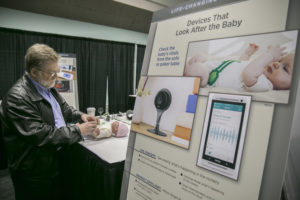
Most new home products that debut each year are a little more energy efficient or require a little less maintenance. Maybe they are available in a new style or color. That’s not significant enough to make the Life-Changing Products Exhibit, which will tour nearly a dozen cities in 2017. Product in the exhibit need to re-imagine the way people live at home.
Case in point: the Gate deadbolt, one of the most eagerly awaited launches of 2017. It works like Uber, sending a picture of a repairman before they show up at the door. A camera in the deadbolt allows you to see who is at the door on a smartphone. “Then you can talk to them and let them in,” says Boyce Thompson, curator of the exhibit and author of The New New Home.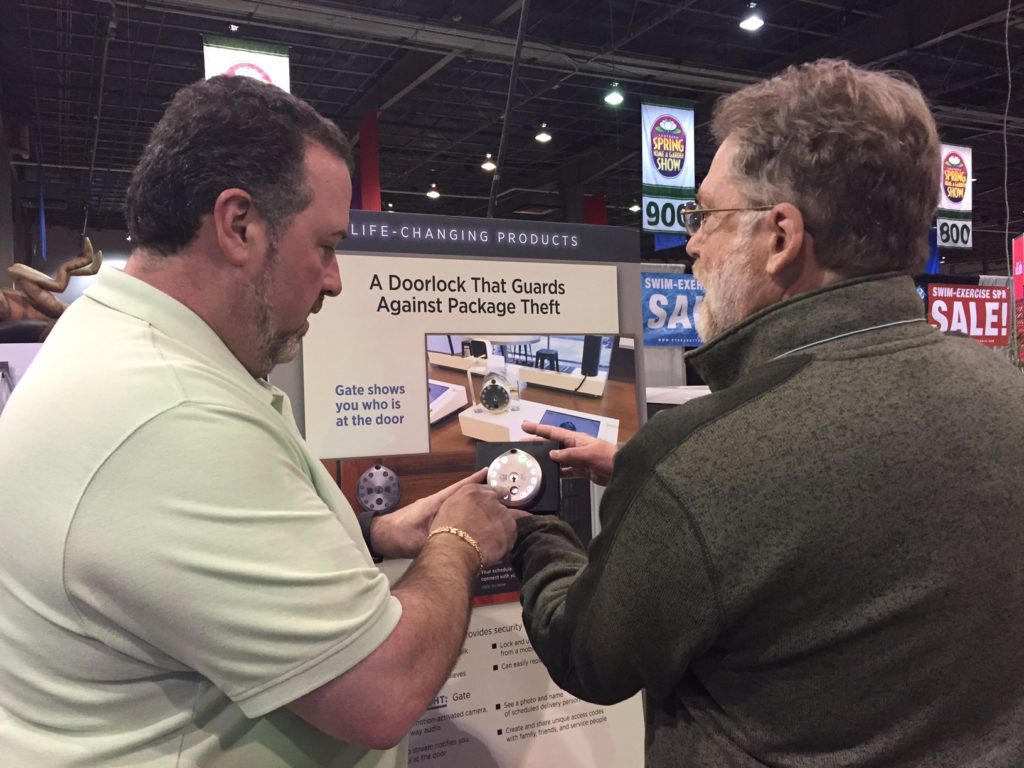 Another good example would be the June oven, which debuted early this year. The counter top convection oven is equipped with a smart camera that can identify what you put inside. It automatically cooks food evenly and perfectly. You can watch your food cooking from an app on your smart phone. You receive an alert when your food is done. The appliance takes the risk out of cooking new things.
Another good example would be the June oven, which debuted early this year. The counter top convection oven is equipped with a smart camera that can identify what you put inside. It automatically cooks food evenly and perfectly. You can watch your food cooking from an app on your smart phone. You receive an alert when your food is done. The appliance takes the risk out of cooking new things.
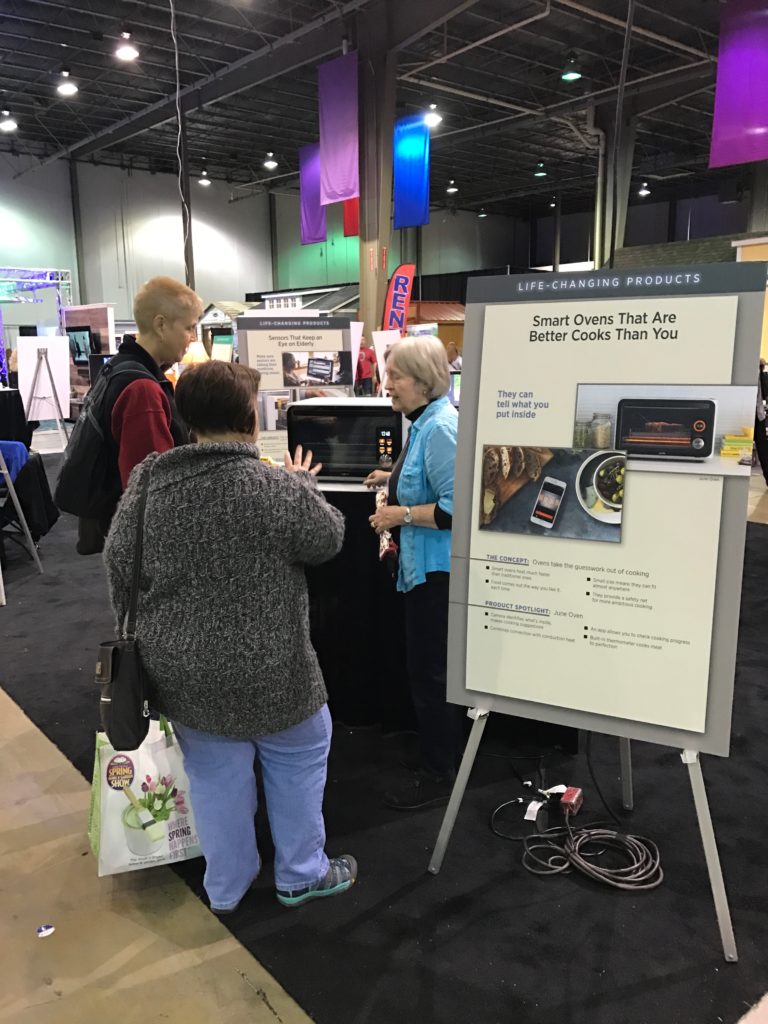
A virtual nursery highlights this year’s exhibit. An app on your mobile device sends alerts when your baby awakes or is sleeping on her stomach. It also shows her temperature and breathing pattern. The Mimo app connects to a sensor on the baby’s nighty that communicates with your home Wi-Fi system. A Nest Cam in the exhibit provides a real-time view of your baby sleeping.
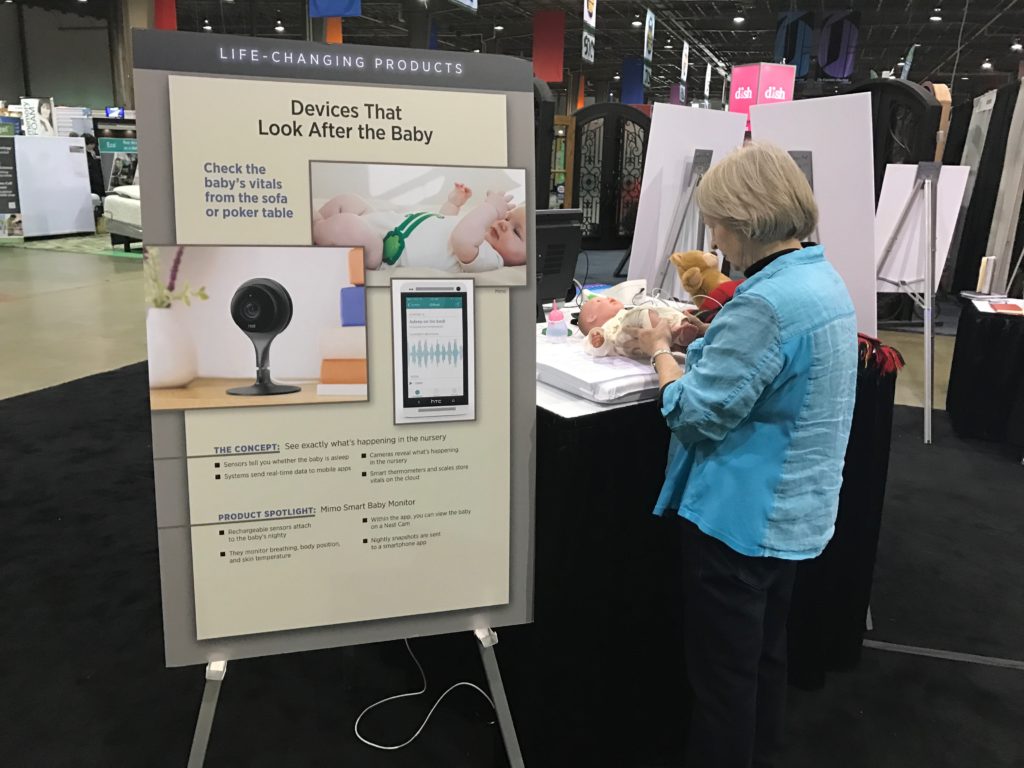
The exhibit also features a system for monitoring elderly parents. Some journals believe that, among the many new internet of things for the home, this category has the most potential. The problem is that elderly don’t want to be monitored. A system from GrandCare includes passive sensors that you can put around the house. They will tell you whether an elderly parent opens the refrigerator or pick up a pill case. The sensors communicate with a touch-screen computer display. With two touches, elderly parents can look at the most recent pictures of their grandchildren or watch Frank Sinatra videos. They can also use the display to have a virtual chat with their doctor, uploading blood pressure data during the call.
The exhibit includes a mix of prototypes and new launches, many of them sold expressly over the Internet. It features one of the first personal robots to hit the market. Moorebot, a prototype developed by Pilot Labs, responds to voice commands, reminds you of calendar appointment, and snaps family photographs. He has made talking appearances on several morning television shows.
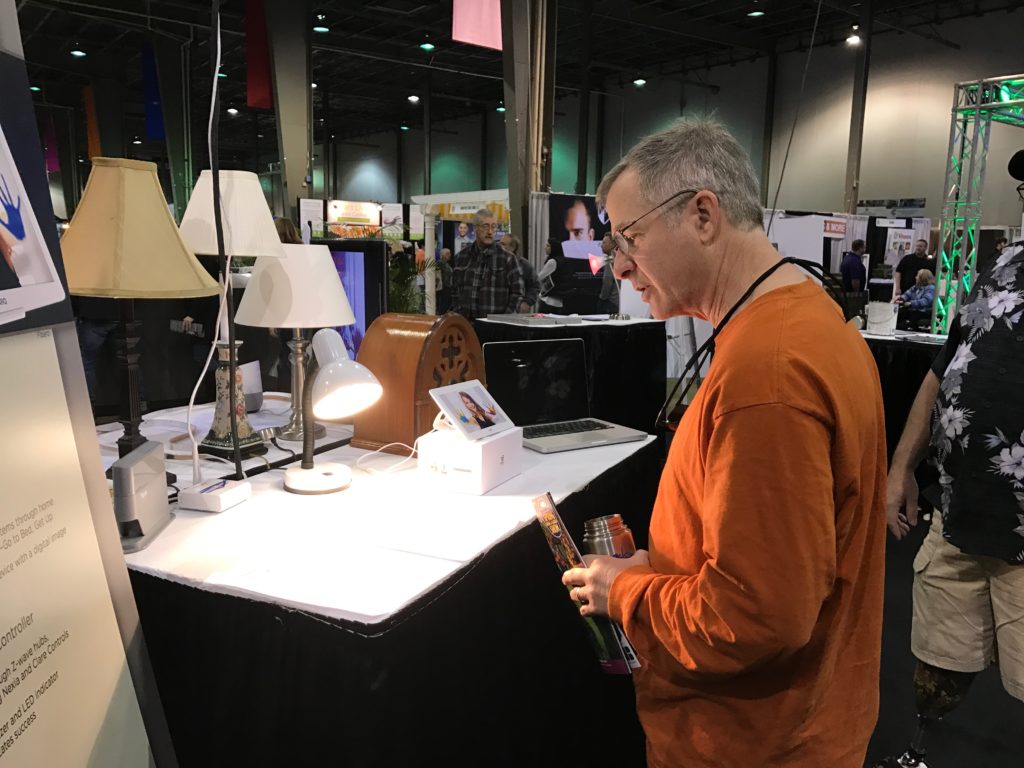
Two home automation systems are featured in the display. A brand new, inexpensive Z-Wave system from Fibaro, Home Center Lite, shows the potential of motion controls. With a wave of the hand, homeowners can activate whole rooms, even floors, of the house. The exhibit is set up so that show-goers can wave their hand over a display and turn on the lights and a radio. Virtually anything plugged into a wall socket can be controlled in this fashion.
Google Home, which only hit the market last December, is also part of the exhibit. Many people received Google Home or Amazon Echo as a holiday gift. They are often unaware that these devices are the front end of home automation systems. Google Home works through your home’s Wi-Fi system to control everything from lights, to televisions, to thermostats, all with voice commands. The exhibit is set up so that show-goers can ask Google to turn off the bedroom lights, play videos on a TV, or control a Nest thermostat.
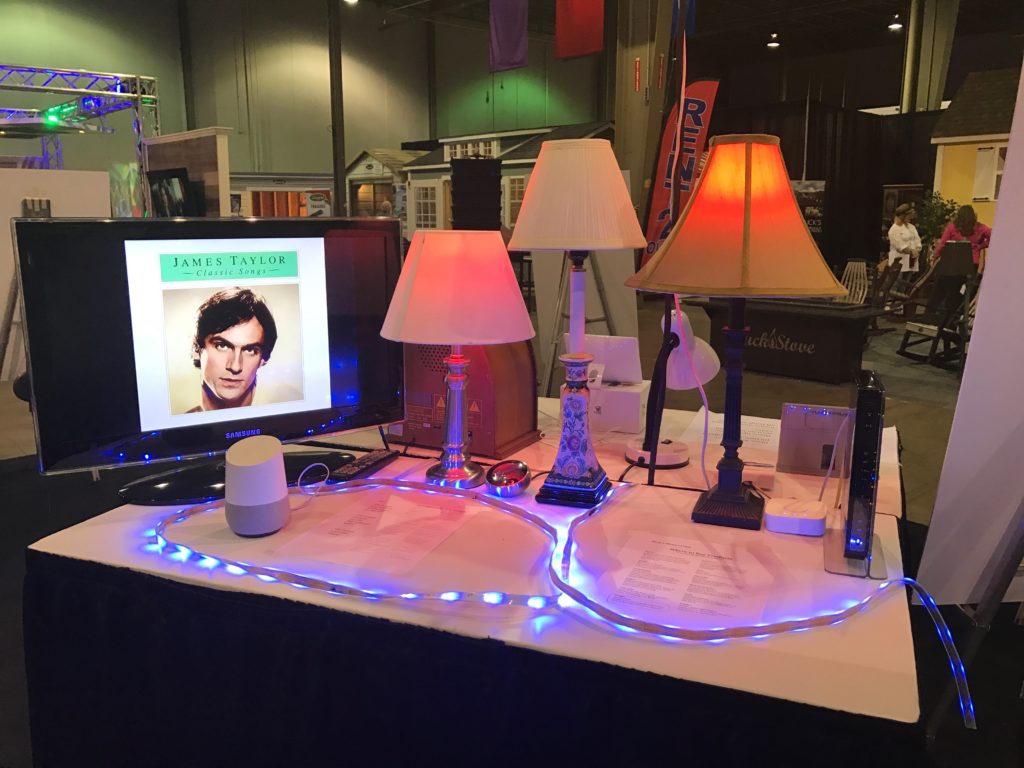
Several products in the exhibit would be great for apartment dwellers. Sony’s new LED light bulb includes an audio speaker that connects via bluetooth to a phone or tablet. The beauty of the system is that you could screw the speaker into any light socket in your apartment or home. You could listen to music at the dinner table and later take the bulb to your bedroom. The speaker comes with a remote control that changes the color of the LED light.
Finding examples of traditional building materials that have been re-invented is never easy. CertainTeed’s new line of Habito drywall, though, fits the bill. Twice as dense as normal drywall, though just as thick (1/2-inch), the drywall could hold most televisions or shelves without finding a stud behind the wall or using a drywall anchor. The drywall is ideal for entertainment walls. But it would also be a good spec for walls that you know may take abuse — like those in the garage or near the back door. Show-goers and television host alike can take a hammer to Habito and traditional drywall and see if they can break them.

Sleep trackers were a big hit at this year’s Consumer Electronics Show. The Life-Changing Products Exhibit includes an inexpensive monitor from Beddit that monitors your sleep patterns and spits out daily reports. Each morning, you receive a grade for your night’s sleep based on how much sleep your got, how much snoring you did, and the depth of your sleep. You also receive daily tips for getting a better night’s sleep. The idea is to keep improving your score.
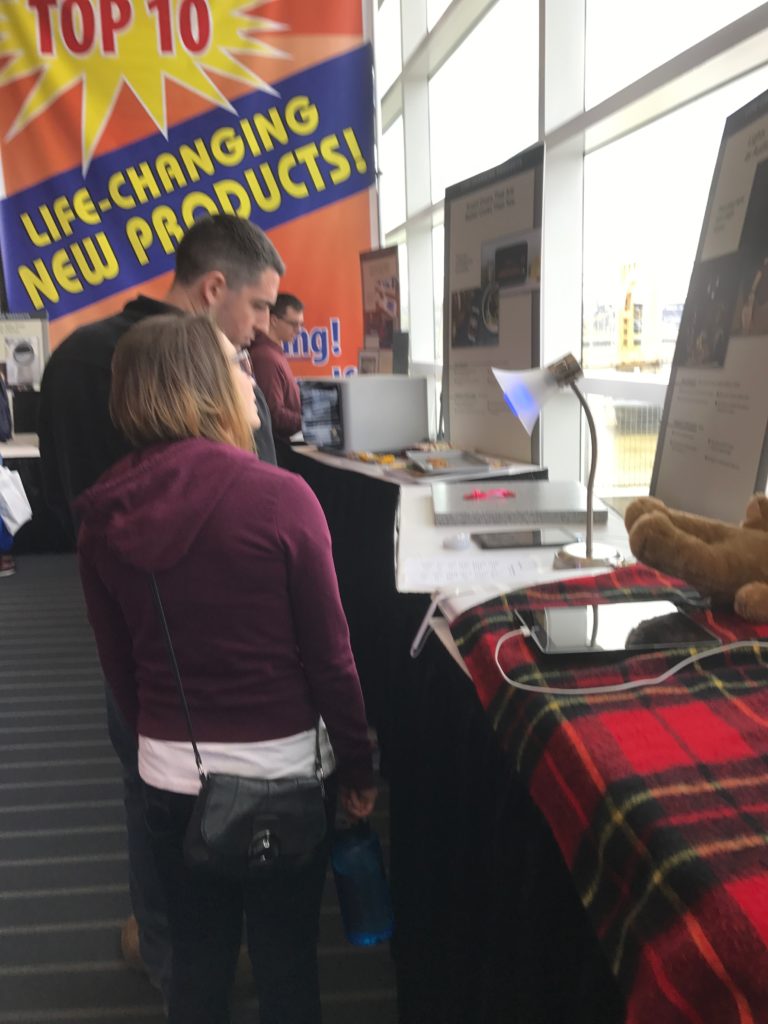
The biggest hit of this year’s show so far may be a revolutionary smart valve developed in Israel by Triple+. It is just rolling out in the United States. The valve comes with a sensor that you attach to the floor. When the sensor gets wet, it sends a signal to the valve via your home Wi-Fi system, and the valve closes. Show-goers can see the valve in action in the exhibit. Dip the sensor in a glass of water and ten second later the valve closes. The company makes a similar system that checks for natural gas leaks.
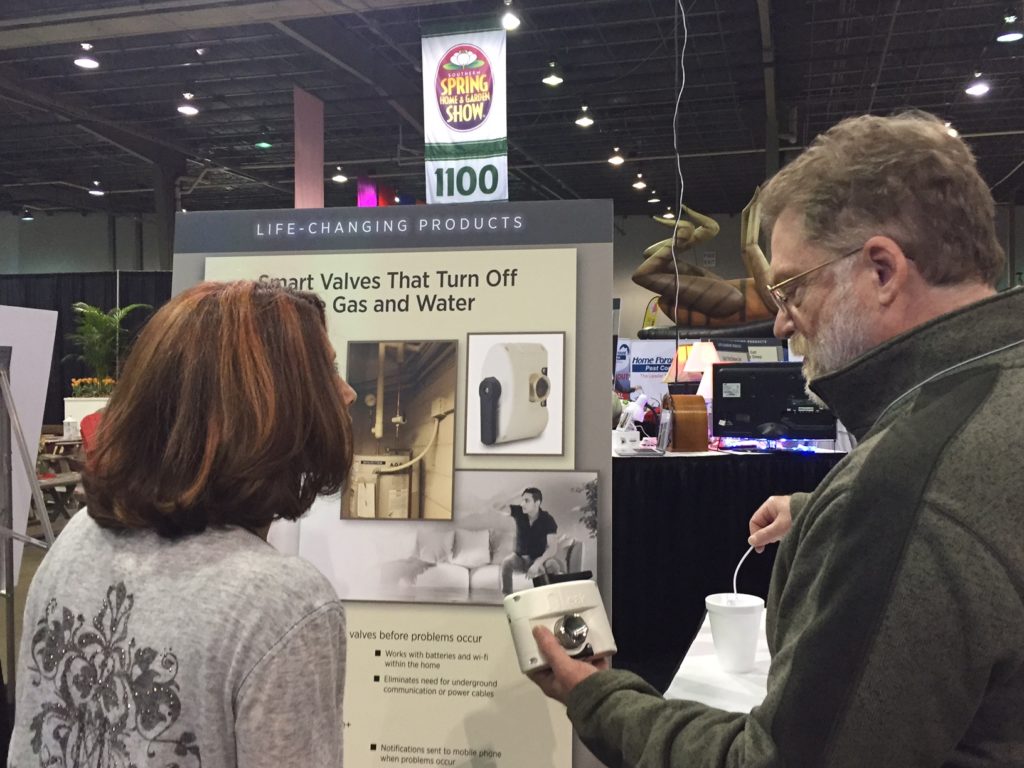
The smart valve shows how Internet-based products for the home are evolving. Early products and home automation systems merely provided information; they would tell you that a window was open or that you had a leak in the basement. Now they are taking action, often significant action that can provide peace of mind or prevent damage from spreading.